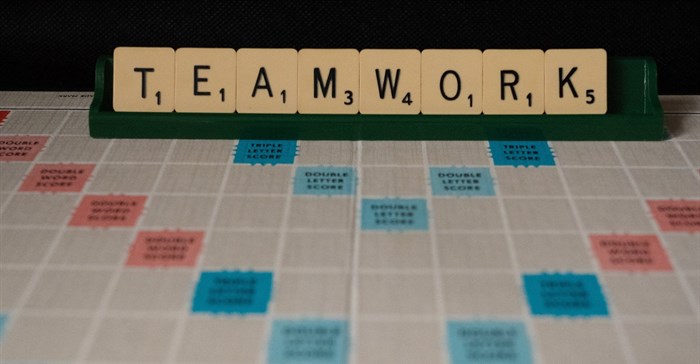






Nowadays, things are a little more complicated. The process of getting your goods into a customer’s hands involves several teams. In my experience, very few of these teams are talking to each other.
If you’re looking for a way to get alignment with your teams, there’s nothing better than doing an alignment workshop. What follows is a bit of an instruction guide to get you going.
First things first, this is supposed to be fun and interactive. Everyone needs to participate, so if you see someone sitting back, invite them to give ideas or get their opinions. The fun part is that for the purposes of this kind of workshop, there's no budget and no mandates. In other words, ideas don't necessarily have to fall within each team’s discipline and this allows for participants to bring new perspectives to each other’s daily grind.
You will need some A2 blank page workbooks and a bunch of post-it notes.
Begin by creating teams. To run an interactive workshop with a group bigger than five is a nightmare of dominant personalities and 'under-the-radar' coasters. So, break them up a bit. Try to split the teams so that there is a good spread of expertise and personality in each one.
There are two approaches to dominant personalities - put them all in one group and let them fight it out, or put one or two in each group. They both have their pros and cons, but I prefer option one because dominant personalities often become groups of one without input from others. Make sure each team has a designated scribe, a workbook, and post-it notes for ideas.
Once your teams are figured out, it's time to begin creating personas. Personas are basically the archetypes of the kinds of customers that you serve. At the end of the day, every business is about serving a customer.
The scribe needs to split a page up into three columns, titling them who, challenge, and opportunity. Let the teams make up people with rich personal lives, work lives and challenges, fitting all of these under their relevant columns.
Once you get to the opportunities section, let them come up with some very broad ideas. Don't get into detail here. You don't need mechanics. If the idea is "a Facebook competition with a car as a prize", that's fine. No need to break it down further.
At the end of the process, each team presents their personas to the rest of the room. This is for debate and crafting. This is not a competition to see who made the best personas. Keep it light.
The next step is customer journeys. Come up with three situations that a customer might find themselves in. Maybe it's buying supplies. Maybe it's looking for more information. For each situation, come up with what your customer may be thinking or doing. Are they stressed out? Are they phoning a lot of suppliers? Are they googling something?
Then the ideas, as the name suggests, are where we come up with a few tactical ideas to help this customer with their thinking/doing or situation. This needs to be done for each persona and can be quite time-consuming. Gauge how many breaks are required here.
Finally, there are six in 10. Six in 10 is coming up with six ideas in 10 minutes. This is a solitary activity. Each person sits with an A4 page to do this. Once they're done, they converse with their team about their ideas and pick the top three. They then present those to the broader team.
And you’re done. A workshop like this can take up to five hours, so make sure you can clear diaries to get it done.
The next step is to take those personas, user journeys, and ideas and look at how feasible everything is. Compile everything into a document that you can share. By the end of the day, your teams will have understood the customer better, understood each other better, and you’ll hopefully have a few ideas on how to improve your customer’s experience.
